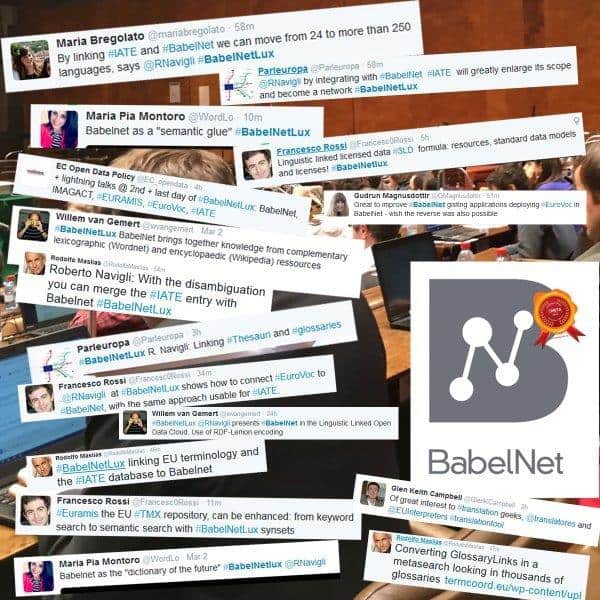
2.67 million synsets are assigned domain labels.īabelNet has been shown to enable multilingual Natural Language Processing applications. Version 5.0 also associates around 51 million images with Babel synsets and provides a Lemon RDF encoding of the resource, available via a SPARQL endpoint. The semantic network includes all the lexico-semantic relations from WordNet ( hypernymy and hyponymy, meronymy and holonymy, antonymy and synonymy, etc., totaling around 364,000 relation edges) as well as an underspecified relatedness relation from Wikipedia (totaling around 1.3 billion edges). Each Babel synset contains 2 synonyms per language, i.e., word senses, on average.

It contains almost 20 million synsets and around 1.4 billion word senses (regardless of their language). For each Babel synset, BabelNet provides short definitions (called glosses) in many languages harvested from both WordNet and Wikipedia.Īs of April 2021, BabelNet (version 5.0) covers 500 languages.

Similarly to WordNet, BabelNet groups words in different languages into sets of synonyms, called Babel synsets. Additional lexicalizations and definitions are added by linking to free-license wordnets, OmegaWiki, the English Wiktionary, Wikidata, FrameNet, VerbNet and others. The result is an encyclopedic dictionary that provides concepts and named entities lexicalized in many languages and connected with large amounts of semantic relations. The integration is done using an automatic mapping and by filling in lexical gaps in resource-poor languages by using statistical machine translation. BabelNet was automatically created by linking Wikipedia to the most popular computational lexicon of the English language, WordNet.
BABELNET AS AN APP FREE
BABELNET AS AN APP DOWNLOAD
Available for download together with Java APIs for programmatic access.seamless integration of WordNet, Open Multilingual WordNet, Wikipedia, OmegaWiki, Wikidata ( NEW!), Wiktionary ( NEW!).Version 2.5 comes with the following features: The result is an encyclopedic dictionary that provides Babel synsets, i.e., concepts and named entities lexicalized in many languages and connected with large amounts of semantic relations. The integration is performed via an automatic linking algorithm and by filling in lexical gaps with the aid of Machine Translation. Roberto Navigli, the Linguistic Computing Laboratory of the Sapienza University of Rome is proud to announce the release of BabelNet 2.5.īabelNet is a very large multilingual encyclopedic dictionary and semantic network created by means of the seamless integration of the largest multilingual Web encyclopedia - i.e., Wikipedia - with the most popular computational lexicon of English - i.e., WordNet, and other lexical resources such as Wiktionary, OmegaWiki, Wikidata, and the Open Multilingual WordNet.

By Roberto Navigli, Sapienza University of Rome, Italy, May 2014.Īs an output of the " MultiJEDI" Starting Grant, funded by the European Research Council and headed by Prof.


 0 kommentar(er)
0 kommentar(er)
